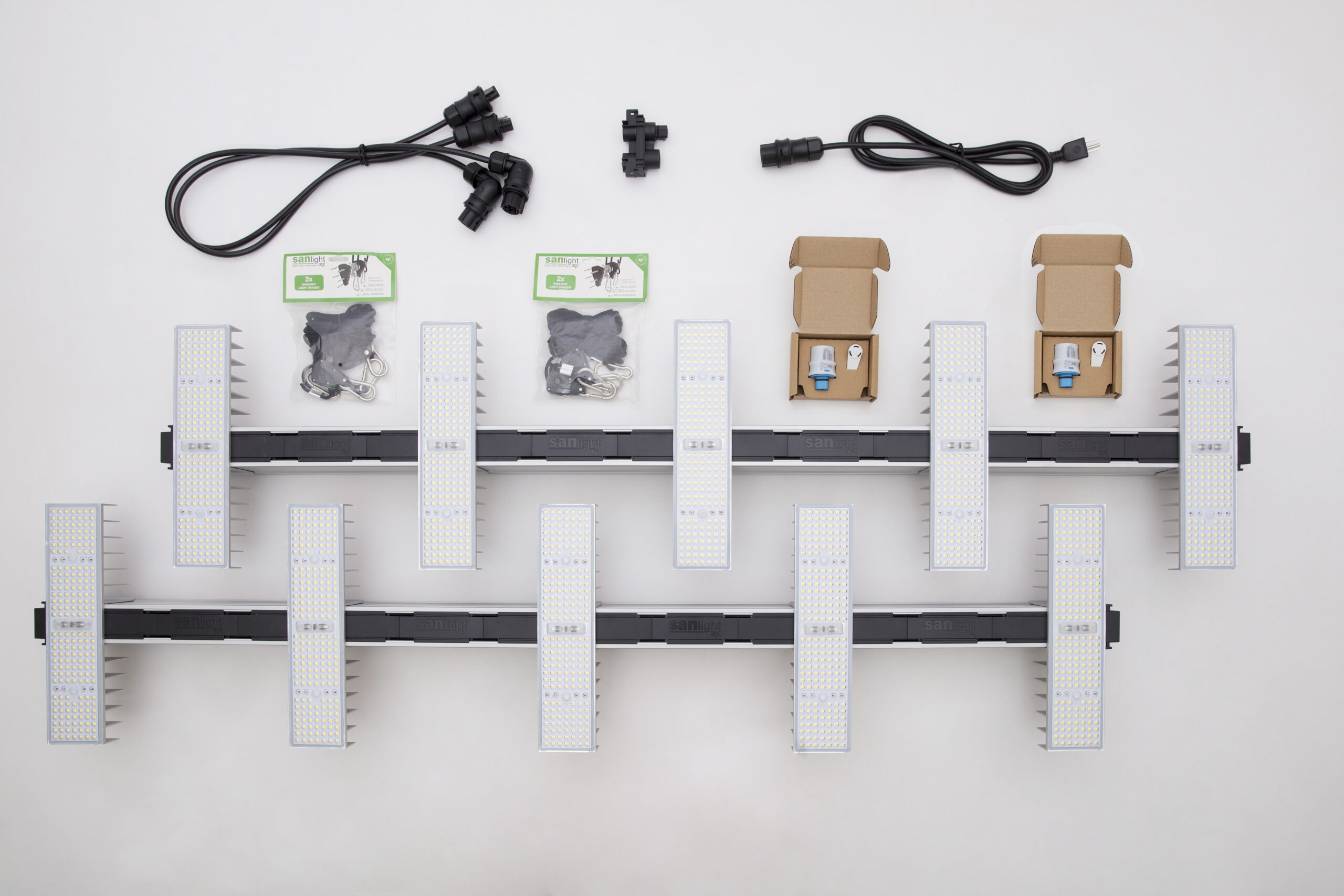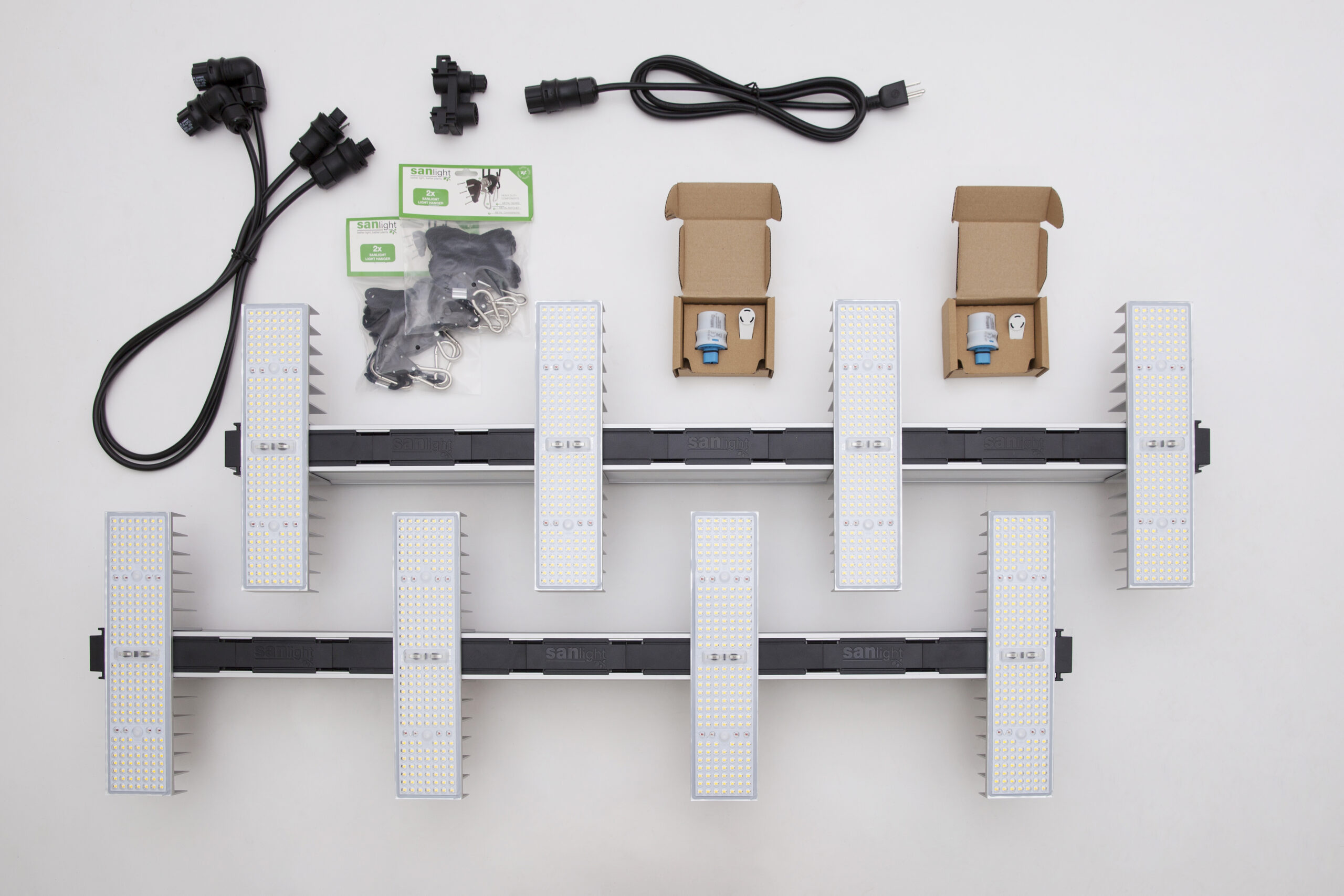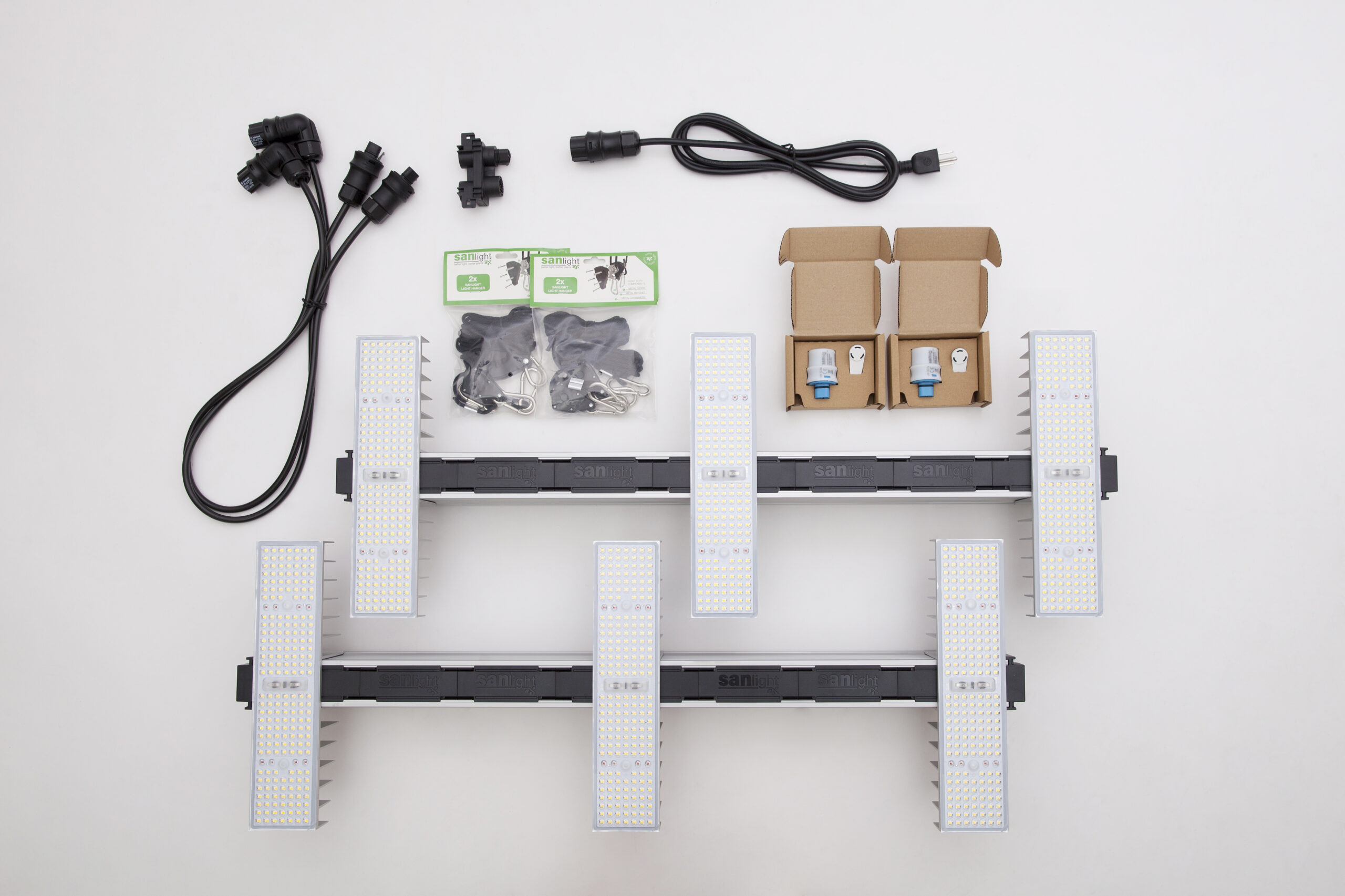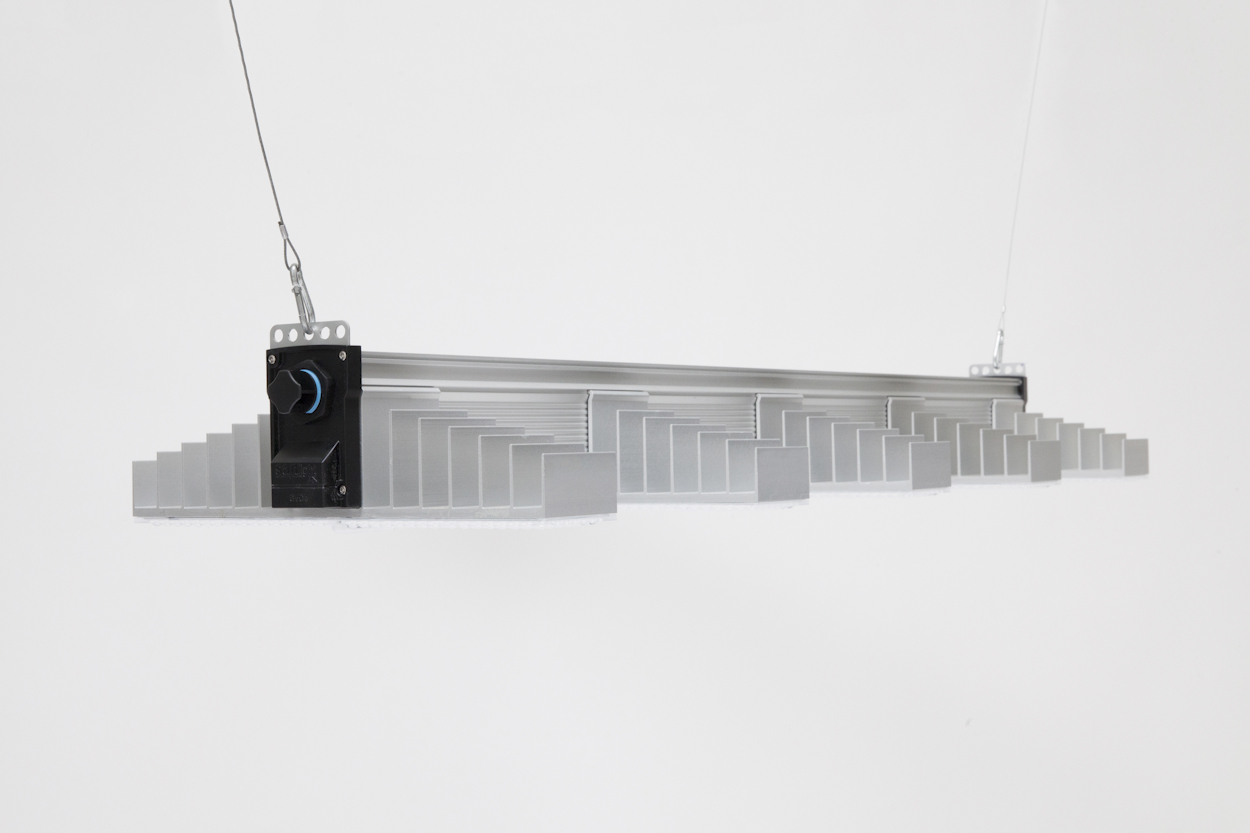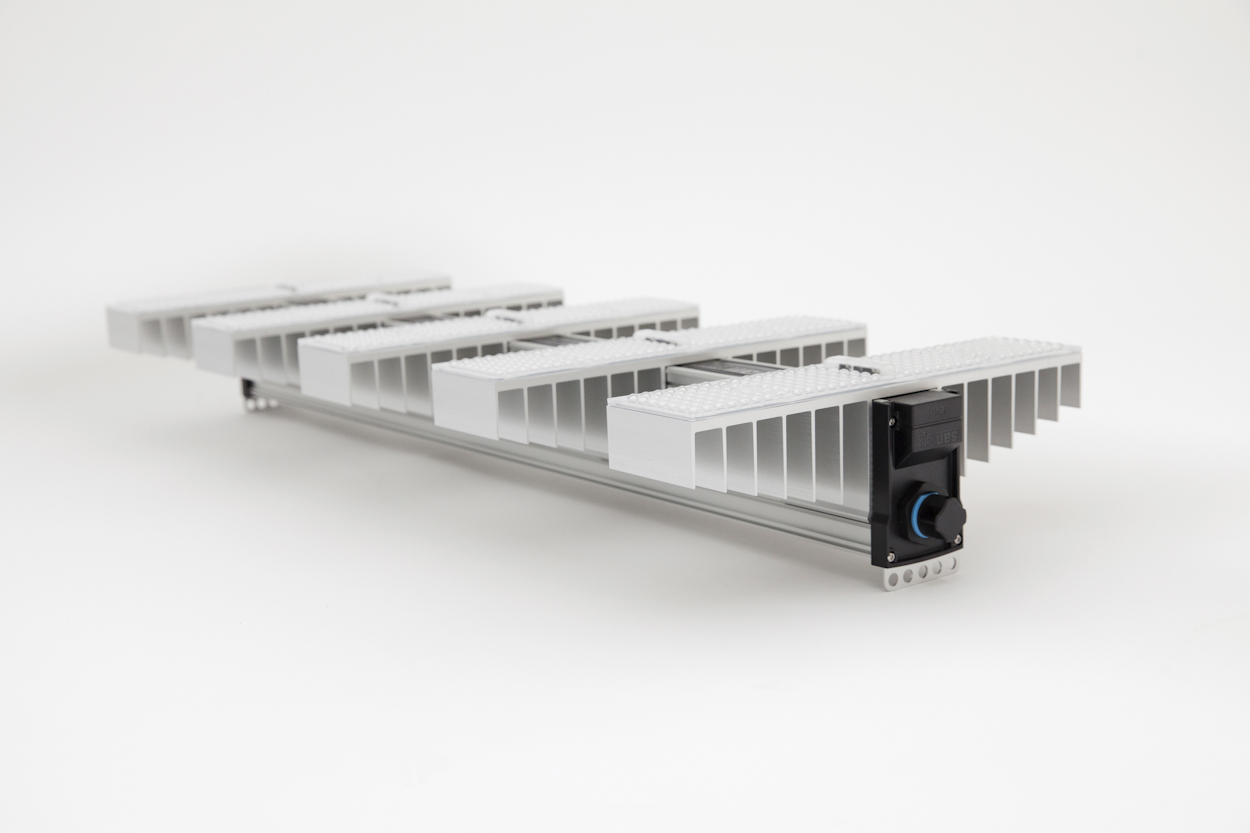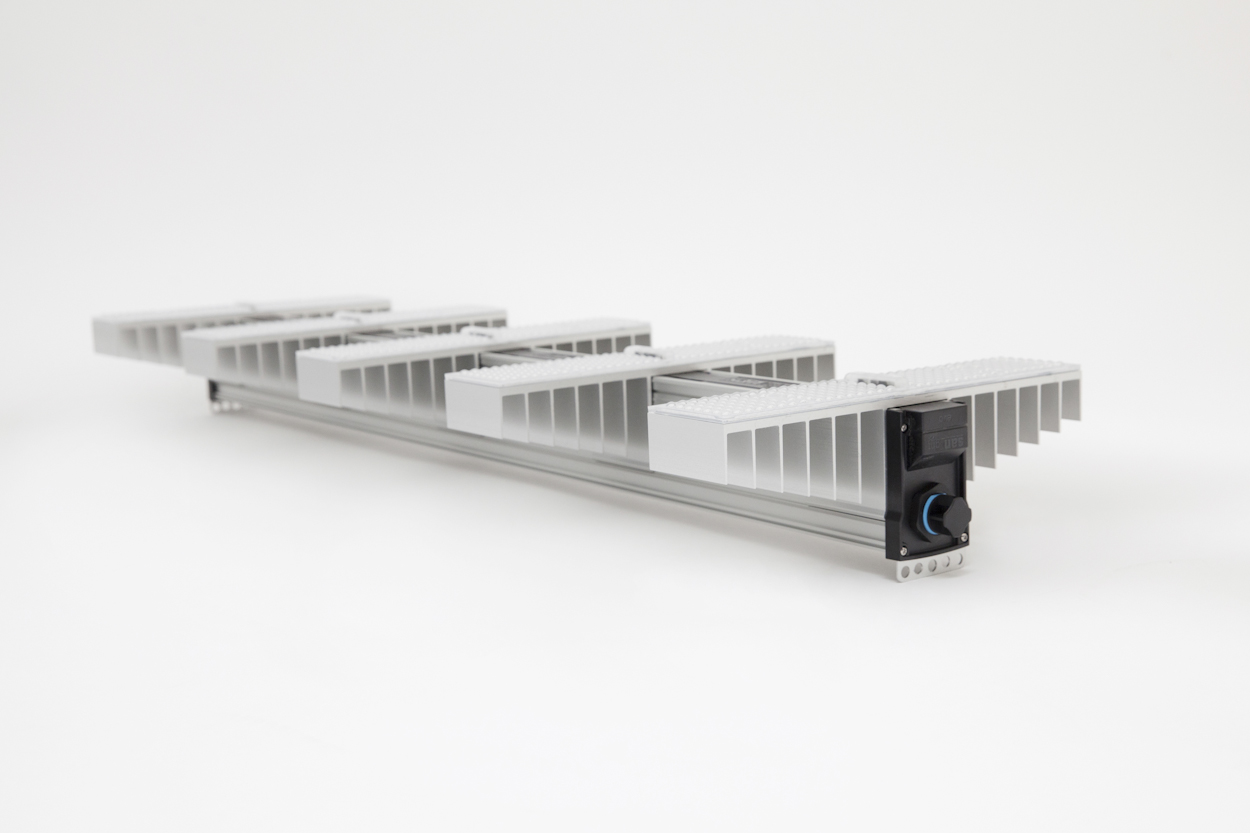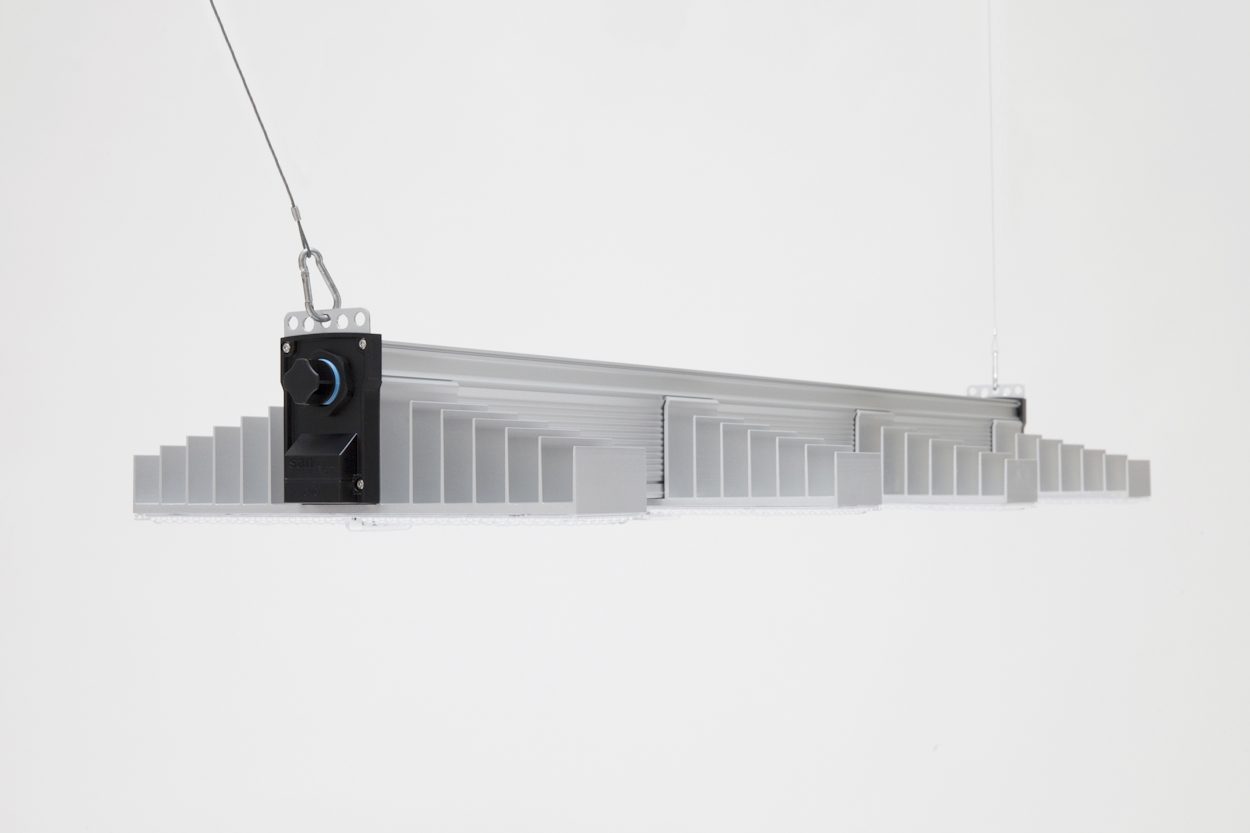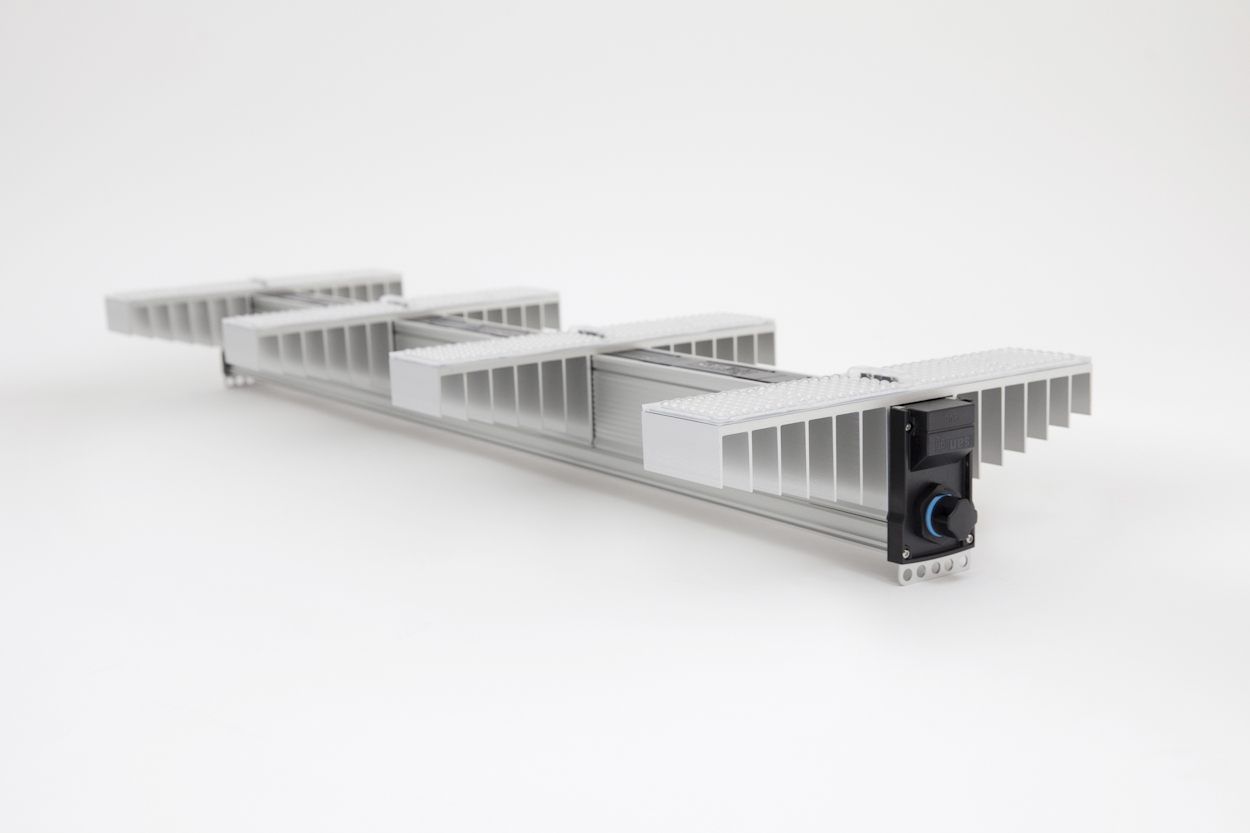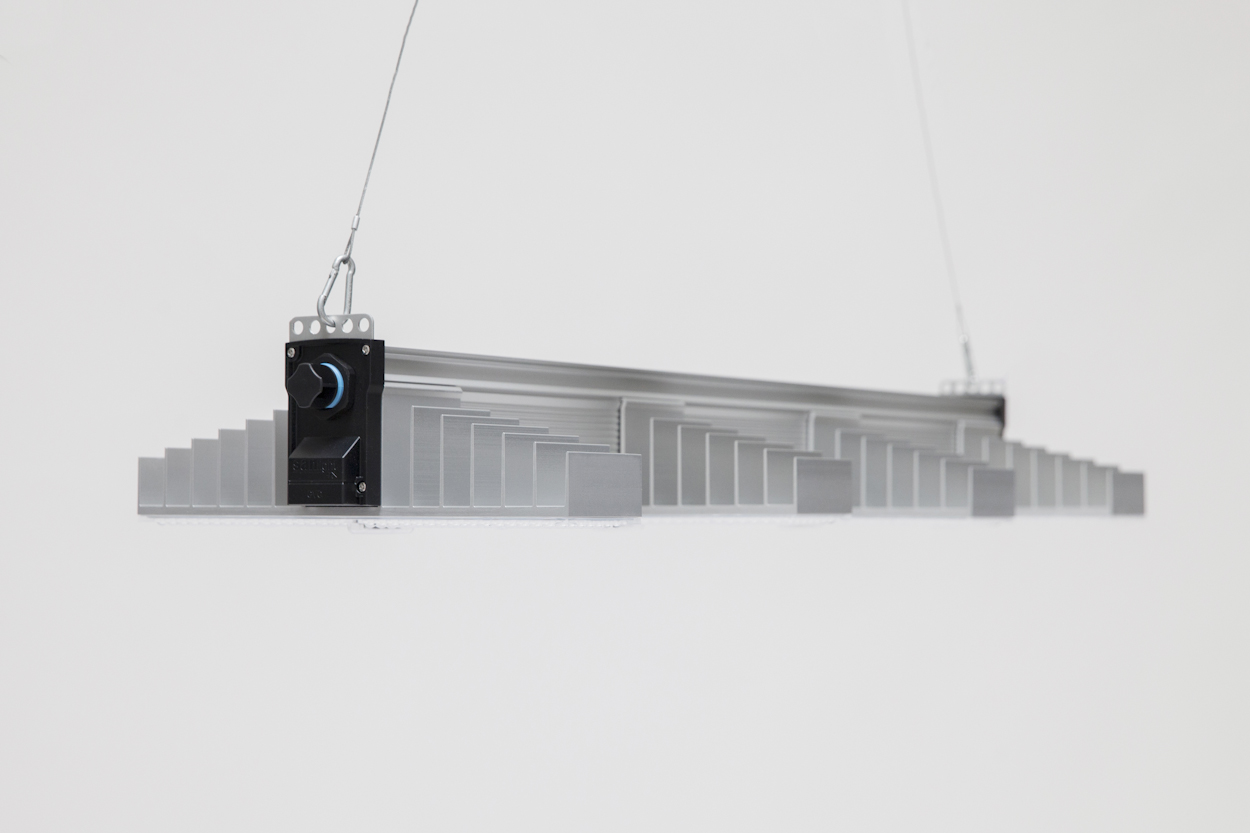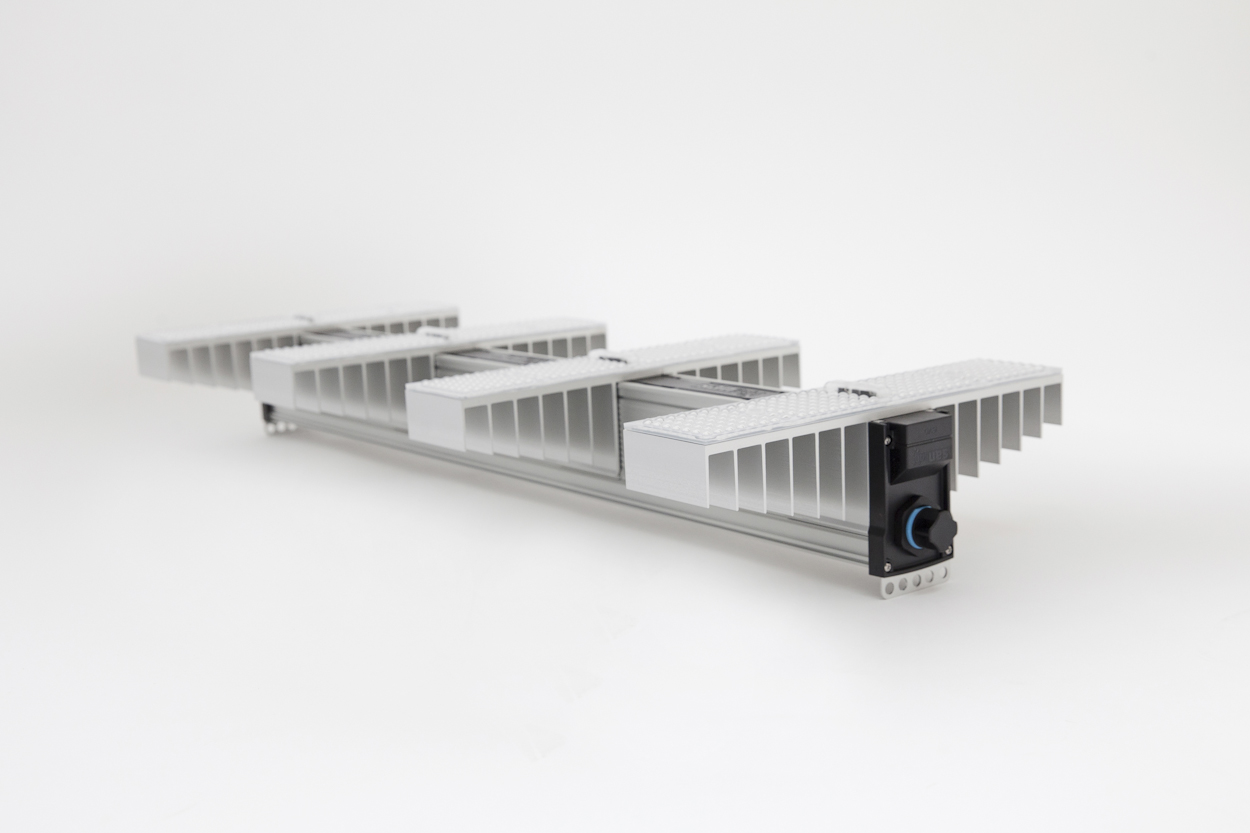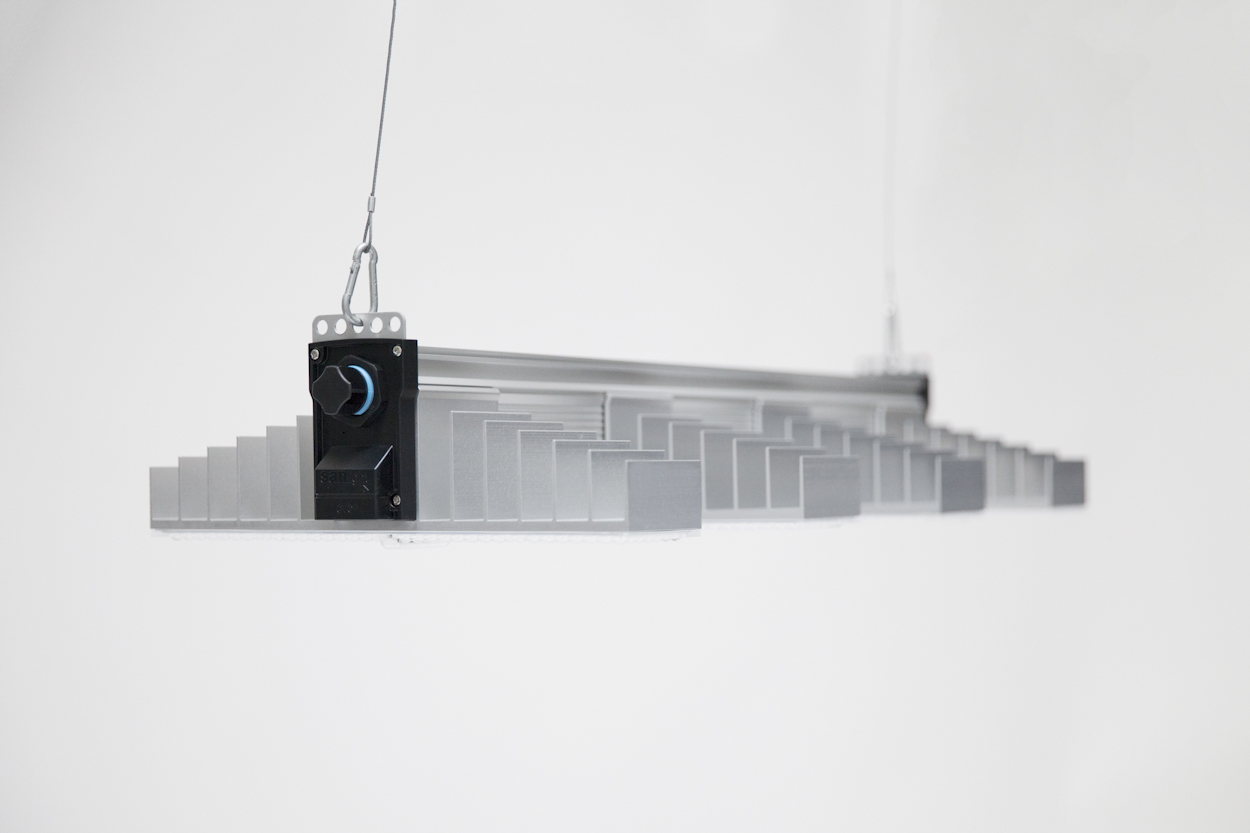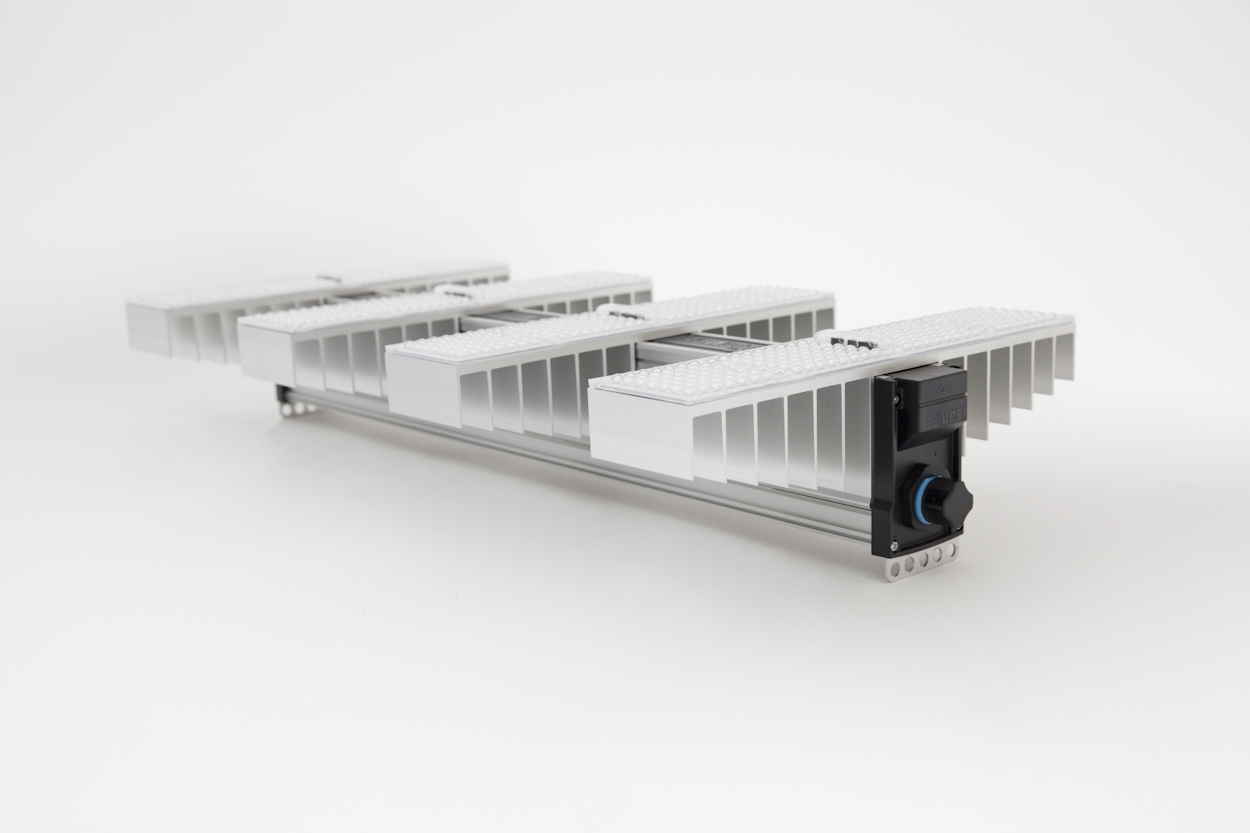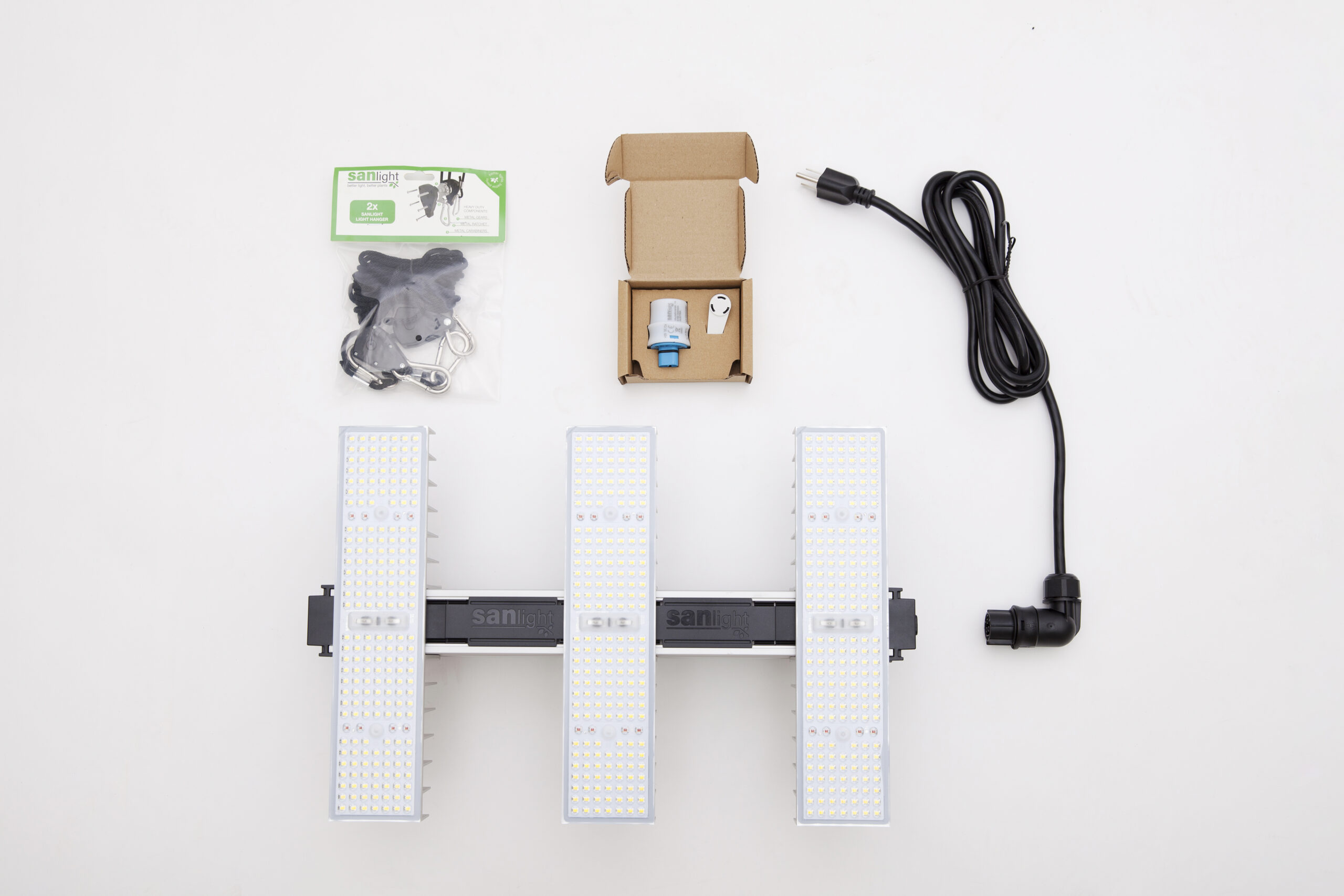LED Growers Unite, Who makes the BEST LED and how long has it lasted ? Cast Your Vote!!!
- Thread starter Thread starter acespicoli
- Start date Start date
-
- Tags Tags
- grow light led
SANS was responsive and offered their data pages
Hi,
you can find all datasheets on our website: Downloads
Best regards,
Reto
SANlight Support
SANlight GmbH
Montafonerstraße 14
6780 Schruns, AUSTRIA
https://www.sanlight.com
Phone: +43 5552 93080 0
Mail: support@sanlight.com
Firmenbuchnummer: FN478697t
Firmenbuchgericht: Feldkirch
UID-Nr.: ATU72620167
OranguTrump
Dion
Phychotron
420empire
kosh
@opt1cIf you guys see this #tag maybe you could stop by for a visit and cast your votes ?
Hope you enjoy the thread!
Last edited:

Shop - SANlight Americas
 us.sanlight.com
us.sanlight.com
This is the SANS USA SHOP
- EVO-Series(25)
- FLEX II-Series(17)
-
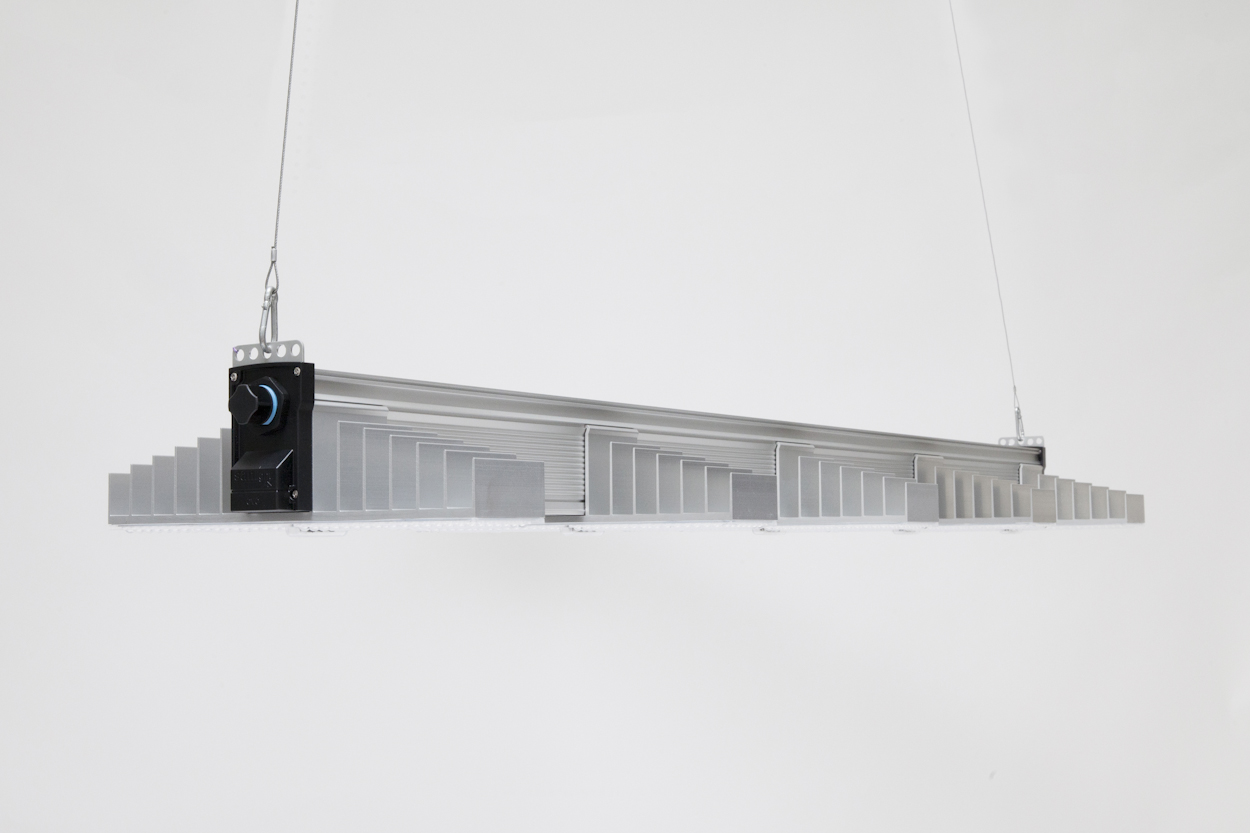
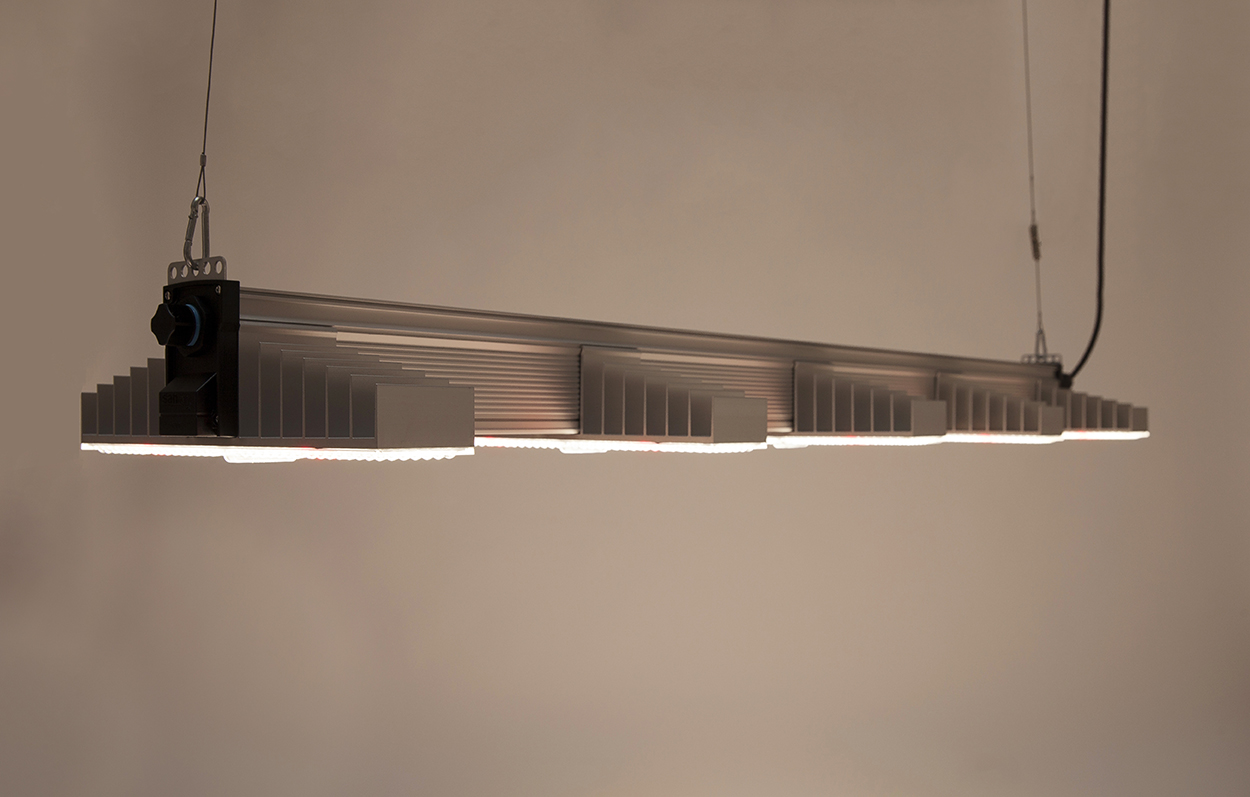
- From: $559.00
LED Grow Light SANlight EVO 5-150
- Select options
-
-
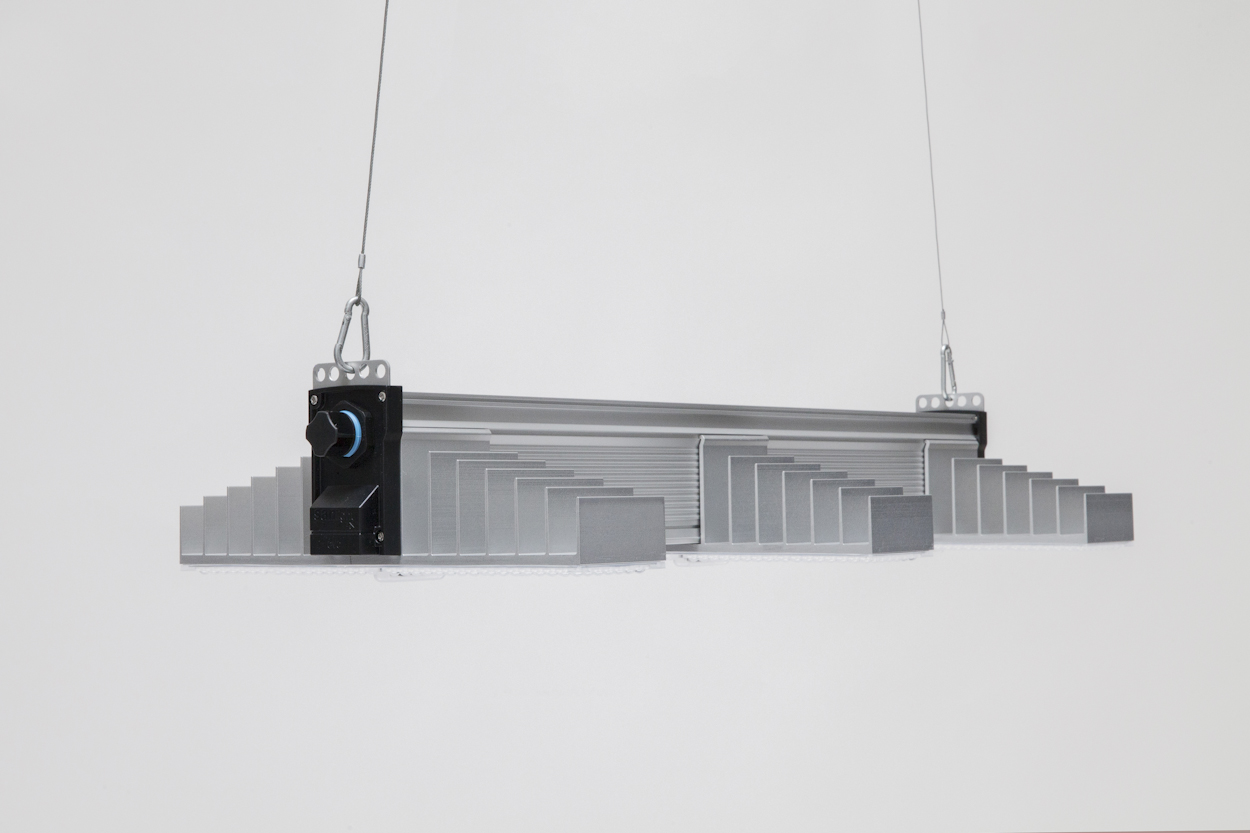
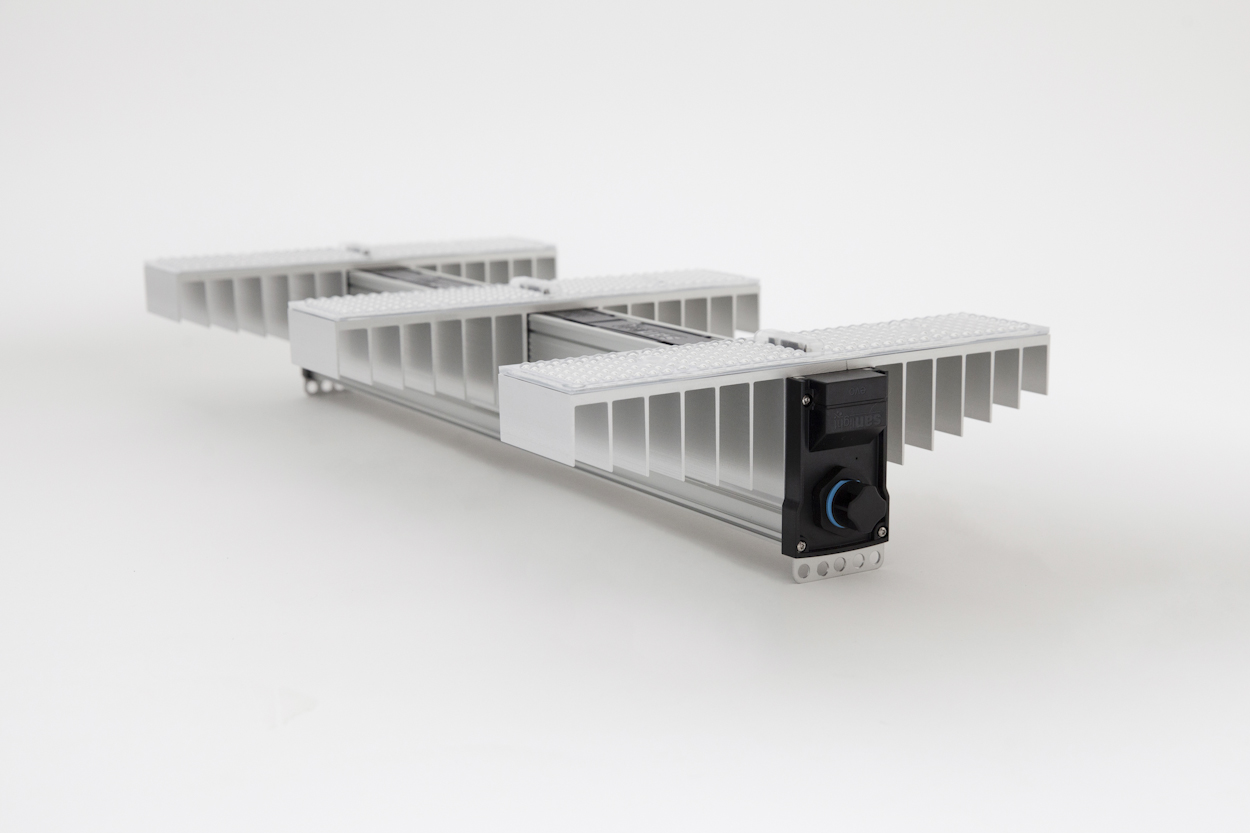
- $369.00
LED Grow Light SANlight EVO 3-8
-
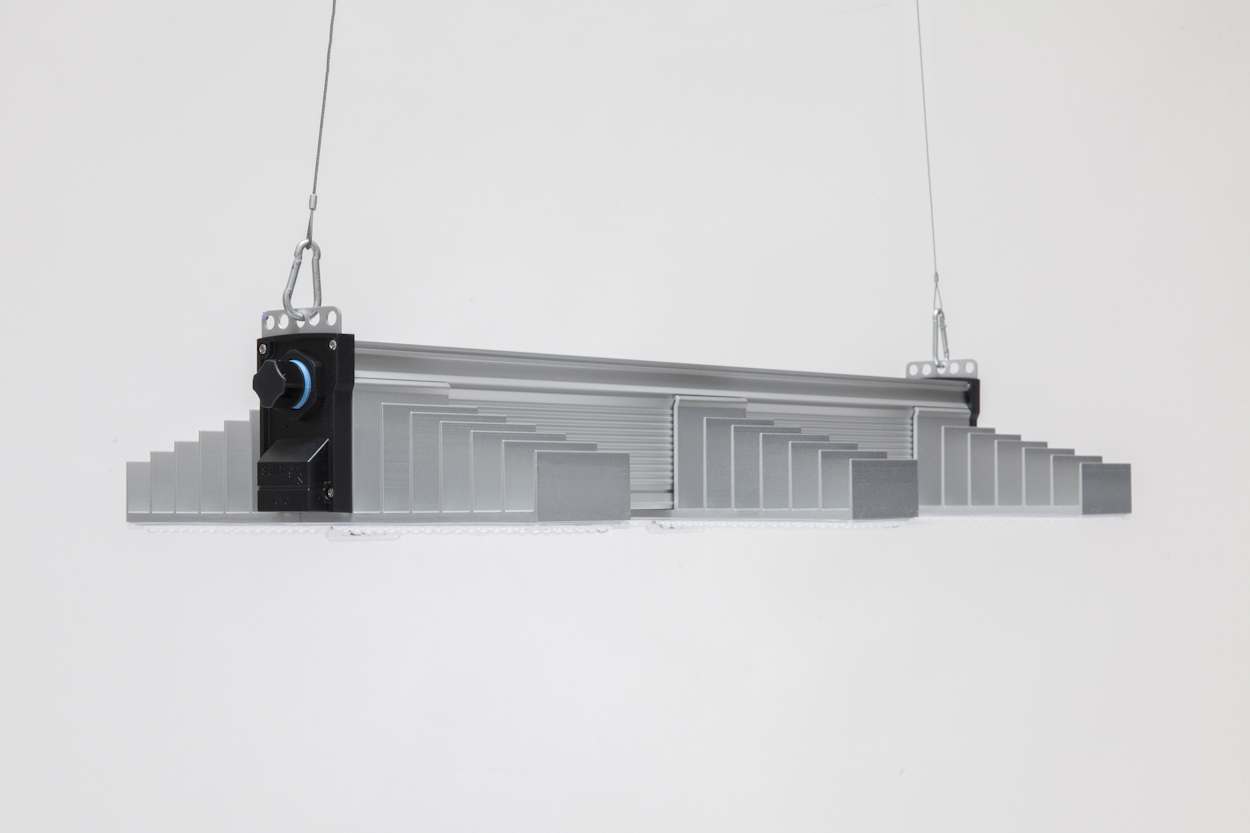
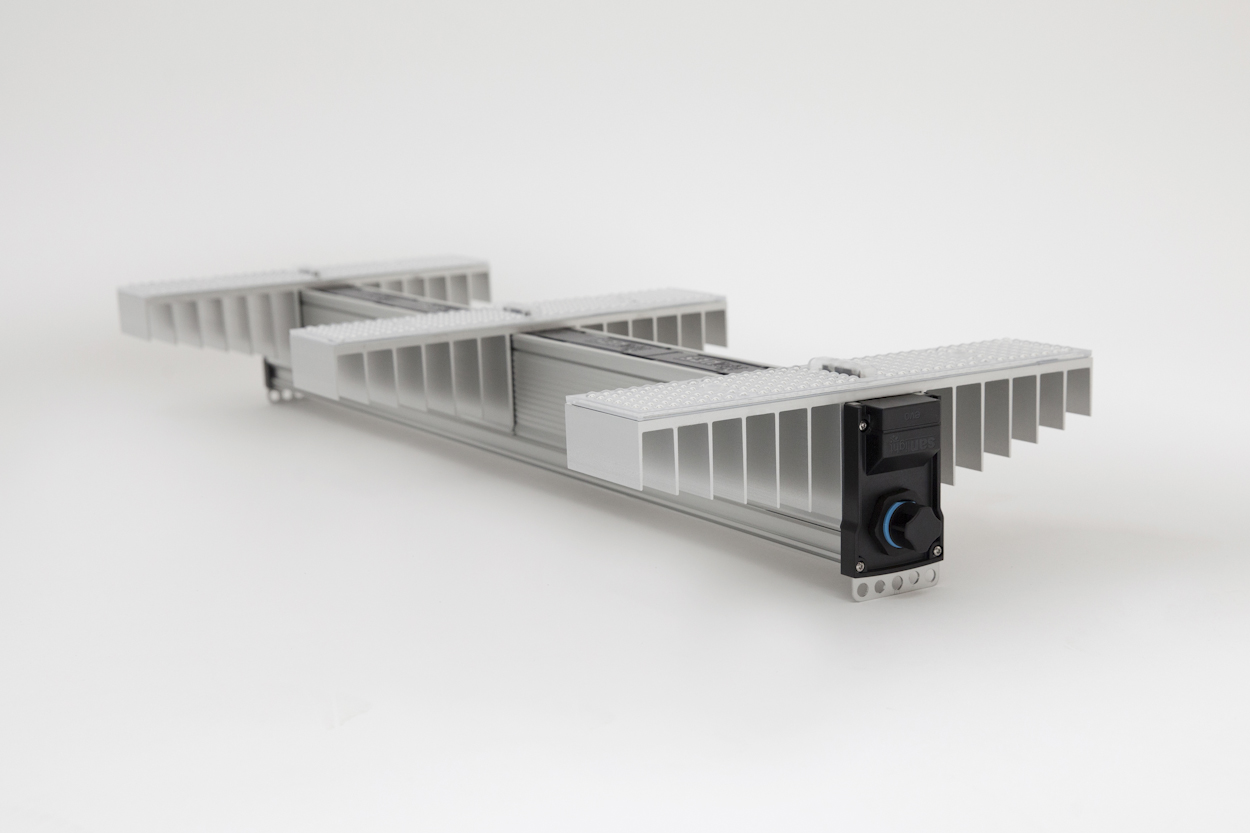
- $369.00
LED Grow Light SANlight EVO 3-100
-
Their blog is also very interesting.
Here about uv testings
https://www.sanlight.com/news/einfluss-von-uv-licht-auf-cannabis/
Here about uv testings
https://www.sanlight.com/news/einfluss-von-uv-licht-auf-cannabis/
HERES SOME SPECS FOR THE EVO 5X5
Description
Elevate your cultivation game with SANlight EVO Sets – a groundbreaking leap in efficiency and innovation.
Our plug-and-play solution offers customers a hassle-free experience, including luminaires, cables, SANlight hangers, and SANlight M-Dimmers.
The EVO Set, boasting an impressive 300W per square meter, effortlessly replaces a 1000W HPS luminaire while consuming just 680W! Experience extraordinary efficiency with a uniform light distribution, showcasing a remarkable homogeneity. With the LED Grow Light Set EVO-Series for 5’x5’, users will get the best g/W ratio possible.
The modular system of the SANlight EVO-Series allows adding luminaries to your existing set-up. With this very easy and comfortable way of adding light, all intensities are possible.
Don’t settle for ordinary – choose SANlight EVO for a revolution in indoor cultivation in regards of longevity, efficiency, and quality. Maximize yields and minimize operating costs. It’s not just lighting; it’s excellence in every watt.
Elevate your cultivation game with SANlight EVO Sets.
EVO 5-150 Specs:
Efficiency Set-Up:
High Intensity Set-Up:
The Package includes:
Description
Elevate your cultivation game with SANlight EVO Sets – a groundbreaking leap in efficiency and innovation.
Our plug-and-play solution offers customers a hassle-free experience, including luminaires, cables, SANlight hangers, and SANlight M-Dimmers.
The EVO Set, boasting an impressive 300W per square meter, effortlessly replaces a 1000W HPS luminaire while consuming just 680W! Experience extraordinary efficiency with a uniform light distribution, showcasing a remarkable homogeneity. With the LED Grow Light Set EVO-Series for 5’x5’, users will get the best g/W ratio possible.
The modular system of the SANlight EVO-Series allows adding luminaries to your existing set-up. With this very easy and comfortable way of adding light, all intensities are possible.
Don’t settle for ordinary – choose SANlight EVO for a revolution in indoor cultivation in regards of longevity, efficiency, and quality. Maximize yields and minimize operating costs. It’s not just lighting; it’s excellence in every watt.
Elevate your cultivation game with SANlight EVO Sets.
EVO 5-150 Specs:
| Module Efficiency: | >3 µmol/J |
| System Efficiency: | 2.7 µmol/J |
| Secondary Optics: | Yes |
| Beam Angle: | 90-112° (unsymmetric characteristics) |
| LM 90: | 90,000 hours |
| Emission Wavelength: | 400-780nm |
Efficiency Set-Up:
| Coverage | 5’x5’ |
| Power Consumption | 2 x 340W |
| PPF | 1830 µmol/s |
High Intensity Set-Up:
| Coverage | 5’x5’ |
| Power Consumption | 3 x 340W |
| PPF | 2745 µmol/s |
The Package includes:
- 2x EVO 5-150
- 1x SANlight EVO Power Cord
- 1x SANlight EVO H-Connector
- 2x SANlight EVO Connection Cable
- 2x SANlight Hangers (2 Pcs.) Load capacity 75lbs each
- 2x SANlight M-Dimmer
- Total weight of the set: 45,96 lbs
San light achieves very good on cannopy lightlevels with their offerings considering the drivers and watts they use.
Thanks will check it out, im digging for the best info to share so thats handy!Their blog is also very interesting.
Here about uv testings
https://www.sanlight.com/news/einfluss-von-uv-licht-auf-cannabis/
My first impression is I like the heat sinks, they look great for passive system with tent exhaust and fans!!!
That would go far to protecting the components thermally


Knowledge Hub - SANlight Americas
SANlight Journey to Enlightenment SANlight Latest Blogs Germ test with the SANlight FLEX II 25 The optimal light intensity for the germination of cannabis seeds In order to define the optimal light intensity for the germination of cannabis seeds with the LED luminaire SANlight FLEX II 25, a...
 us.sanlight.com
us.sanlight.com
SANlight Download Library
EVO 1.5 Datasheet
EVO 1.5 Instruction Manual
FLEX II Datasheet
FLEX II Manual
SANlight EVO M-Dimmer Manual
SANlight EVO BT-Dimmer Manual
EVO
FLEX
Last edited:
Lifespan Of An LED
What does service life mean for SANlight?
As a producer of LED lights for horticulture, we can choose from an almost unmanageable variety, the right LED for our products. Besides performance and price, lifetime is one of the most important indicators that influence our selection.How to measure lifetime
In the technical world of LED, lifetime is defined by aging over time. Each LED ages and thus loses performance. But different LED types also age at different rates. In addition, temperature, operating current, chemicals and humidity dramatically affect the life of LED. In 2011, the Illuminating Engineering Society of North America published the first paper defining and standardizing the corresponding measurement methods. The service life specifications are now subject to the DIN IEC/PAS 62 717 standard.Since LED shine for a very long time, the tests for service life would require several years. Therefore, the standard defines that LED may be tested under extreme conditions, and the results can then be extrapolated back to normal ambient conditions. The result of such lifetime tests are then the LM or L values. However, the lifetime can refer to different losses. SANlight specifies the LM90 value as the lifetime. This means, for example, that our EVO-Series has only lost 10% of its light output after 90,000 hours of operation.
Factors influencing the service life of LED are…
LED quality
As described in our other blog, not all LED are the same. The most serious differences in lifetime can be seen with Midpower LED. The pictures below show you the lifetime data of two different midpower LED from the same manufacturer. The left picture shows the lifetime of the Seoul 3030-C12C LED, which we use in our EVO-Series. It can be seen that this LED still has 90% of its power after 60,000 hours of operation, even at an operating temperature of very hot 105°C. The right picture shows the aging of a much cheaper 3528 LED, which was tested under the same conditions. This LED has already lost 10% of its initial light output after 20,000 hours.Illuminating Engineering Society of North America published the first paper defining and standardizing the corresponding measurement methods. The service life specifications are now subject to the DIN IEC/PAS 62 717 standard.
Since LED shine for a very long time, the tests for service life would require several years. Therefore, the standard defines that LED may be tested under extreme conditions, and the results can then be extrapolated back to normal ambient conditions. The result of such lifetime tests are then the LM or L values. However, the lifetime can refer to different losses. SANlight specifies the LM90 value as the lifetime. This means, for example, that our EVO-Series has only lost 10% of its light output after 90,000 hours of operation.
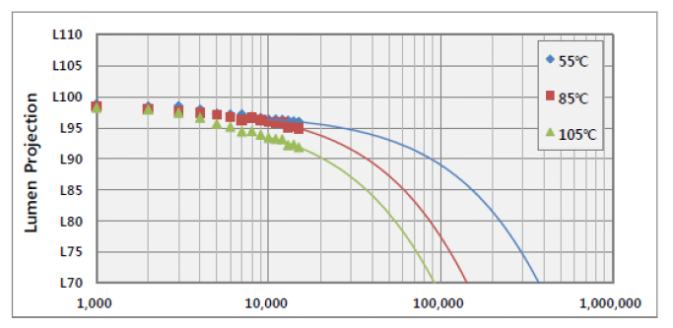
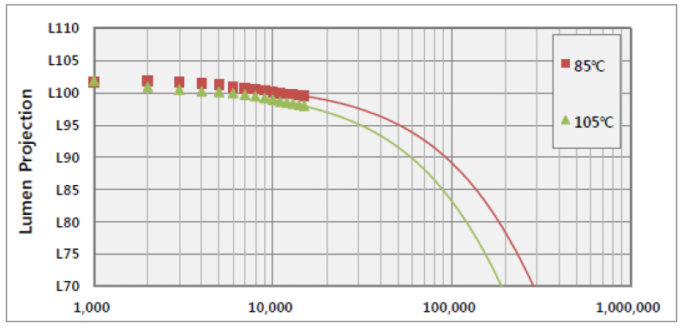
LED operating temperature
Another decisive factor for the longevity is the operating temperature of the LED. In the SANlight EVO-Series, the LED are optimally cooled via the very large heat sink. In practice, this means that the LED does not get warmer than 70°C at a room temperature of 30°C.In addition, the heat sink is designed for the rough use in the greenhouse. This means:
- Even heavy pollution of the heat sink does not lead to overheating of the LED
- The heat sink is easy to clean
- Ambient temperatures of up to 50°C are technically no problem – such temperatures often occur in greenhouses directly under the roof


Chemicals and moisture
In horticulture, a wide variety of chemicals are brought into the grow room via the fertilizer. Professional growers regularly evaporate sulfur in their greenhouses to protect their plants from fungal diseases. A relative humidity of up to 90% is not uncommon.All this negatively affects the life of the LED. Therefore, it is very important to protect the LED from these influences in the best possible way. Poorly protected leds rarely reach the stated lifetimes in practice. The picture below shows a part of a LED light which has been used for more than one year in rough indoor conditions. Sulfur was regularly evaporated to prevent fungal diseases. On closer inspection, the oxidation of the reflector (black spots) can be seen on the LED. The light output has reduced by 25%.
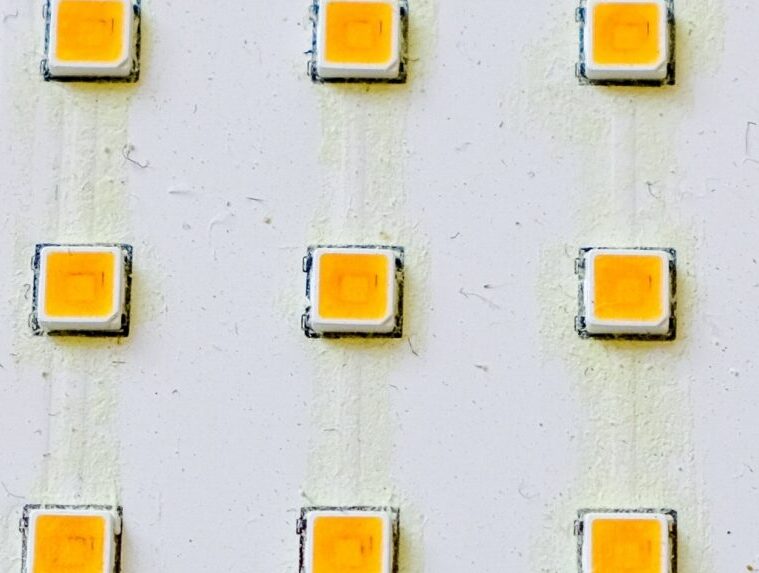
SANS LEDS SUNLIKE SPECTRUM FROM SEOUL SEMICONDUCTOR
Last edited:
LISTED A-Z,
Top 10 Largest LED Lighting Manufacturers in the World
Acuity Brands
Founded: 2001Headquarters: Atlanta, GA, United States
Website: www.acuitybrands.com
Revenue: USD 3.29 billion (FY 2016)
Acuity Brands is one of the leading LED lighting manufacturers in the world, specializing in lighting, controls and daylighting systems in the world. It offers a wide range of indoor and outdoor lighting solutions suitable for every application and environment. The company’s diverse portfolio of lighting products caters to several industries including education, commercial offices, healthcare, hospitality, government, industrial, retail, residential, transportation, roadway, bridges, tunnels, sewer and dams. The company is focusing on developing new technologically advanced products such as solid-state LED lighting integrated with digital controls, organic LED lighting (OLED) and variety of LED-based lamps. The digital lighting systems manufactured by this company comes equipped with eldoLED driver technology which provides superior system performance, innovative features and a wide range of power levels.
Major Products brand: Aculux, Juno, Holophane, Indy, Hydrel and Peerless
Cree
Founded: 1987Headquarters: North Carolina, United States
Website: www.cree.com
Revenue: USD 1.47 billion (FY 2017)
Cree is one of the largest LED lighting companies producing lighting class LEDs and semiconductor products for power and radio frequency (RF) applications. Cree LED chips combine InGaN materials with its proprietary SiC substrates to deliver superior performance and high endurance for semiconductor devices and high intensity LEDs, which operate at high temperatures and voltages. Cree Inc LEDs are used in various applications such as indoor and outdoor general illumination, intelligent lighting, EV/HEVs and electronic signs. Cree smart lighting uses SmartCast Intelligence Platform, a lighting control system that combines intelligent luminaries with Internet of Things (IoT) and innovative apps and provides businesses with sensor rich lighting networks and data driven insights.
Key Products: C-Lite series, KR Series and ESA Series
Eaton
Founded: 1911Headquarters: Dublin, Republic of Ireland
Website: www.eaton.com
Eaton lighting division delivers a broad range of innovative and reliable indoor and outdoor lighting and control solutions. These lighting systems finds use in several applications including commercial, industrial, retail, institutional, utility and residential applications. The company is leveraging the latest technologies to help businesses and communities improve efficiency, reduce costs as well as protect the environment. The company offers a diverse line of connected systems such as ConnectWorks Connected Lighting System, DALI Lighting Control, Halo Home, ILumin Plus, LumaWatt Pro Wireless Connected Lighting System and WaveLinx Wireless Connected Lighting System.
Key Products: All-Pro Outdoor, Ametrix, Corelite, Halo Commercial, Invue and Neo-Ray
Everlight Electronics
Founded: 1983Headquarters: New Taipei City, Taiwan
Website: www.everlight.com
Known as one of the world’s largest LED lighting manufacturers, Everlight offers a wide range of product portfolio including high power LEDs, SMD LEDs, lamps, lighting components, LED lighting modules, digital displays, opto-couplers and infrared components for various applications. The street lighting products produced by this company have high brightness and over 80 CRI, thereby creating a comfortable environment. Everlight LED bulbs, tubes and candles act as omni-directional lighting source and are mostly used in indoor applications. The company’s horticulture LEDs can replicate sunlight and can be fine-tuned according to the specific needs of the customer.
Key Products: COB Series, Horticulture LED, UVA Series, Flash LED and LED Lamps
GE Lighting
Founded: 1911Headquarters: East Cleveland, Ohio, USA
Website: www.gelighting.com
Revenue: USD 1.99 billion (FY 2017)
As one of the world’s largest LED lighting manufacturers, GE Lighting is the lighting division of General Electric and specializes in creating optimal lighting solutions for homes. GE LED light bulbs are known for their high energy savings and durability. C by GE is a line of smart lighting products, having the functions, features and voice control of Amazon Alexa. These range of smart lamps have features such as visual timers and sleep/wake cycle support and can be controlled by voice. In 2015, GE launched TriGain technology which gives unmatchable colors to LED displays. In the same year, the company announced Current, which is an internal startup aimed at combining lighting, digital, solar and energy management technologies.
Key Products: GE LED, GE reveal HD+, GE relax HD, GE refresh HD, C-Sleep by GE and C Sol by GE
Philips Lighting/Signify
Founded: 1891Headquarters: Eindhoven, The Netherlands
Website: www.lighting.philips.com
Revenue: USD 8.1 billion (FY 2017)
Philips has long been one of the world’s most recognized LED lighting manufacturers. Philips Lighting has been officially known as Signify since May 2018. However, they can use the brand name “Philips” for their products until 2030. When Philips was founded in 1891, its plan was to provide cost-effective and reliable electric incandescent light bulbs for everyone. For over 120 years, Philips Lighting have been innovating to make people’s lives more comfortable and productive by offering high quality lighting solutions for public places, professional spaces and homes. By using a combination of patented technologies, Philips lighting systems can connect seamlessly with other digital devices, thereby benefitting the customer and the environment. Philips Hue is a wireless lighting system by which one can control the lights and create the right ambience for any moment. This line of connected lighting system works with a range of different smart devices and can connect with Amazon Echo, Google Home and Apple Homekit.
Key Products: Philips Hue, Philips LED Bulbs, Philips LED Tubes and Philips LED Spots
Find out Philips’ market share in the global LED Lighting market
Osram
Founded: 1919Headquarters: Munich, Germany
Website: www.osram.com
Revenue: USD 4.9 billion (FY 2017)
Osram Opto Semiconductors is a subsidiary of Osram and specializes in the design and manufacturing of opto-semiconductor products including light emitting diodes (LEDs). The company use their extensive technological know-how to produce high quality products in the field of LED lighting, visualization and sensor technology. Osram LED general lighting is used in variety of applications including indoor, outdoor, horticulture and human centric lighting. Osram’s human centric lighting products helps in creating lighting that replicates natural daylight, thereby enhancing a person’s performance, comfort, health and wellbeing. The company also offers digital lighting systems that helps customers deliver smart building and IoT projects.
Key Products: Osconiq, Duris, Soleriq, Firefly, Synios and Topled
Nichia Corporation
Founded: 1956Headquarters: Anan, Japan
Website: www.nichia.com
Revenue: USD 2.42 billion (FY 2016)
Nichia is one of the world’s top LED lighting manufacturers in terms of revenue generated from the sales of LED packages. It designs and manufactures LEDs for displays, LCD backlighting, automotive and general lighting purposes. The world’s first white LED was developed by this company by combining yellow phosphor and blue LED. The company also produces UV-LED which is used in applications that require rigorous quality checks such as high precision curing, ink curing, bill checking, counterfeit detection and lithography. Nichia LED packages are characterized by high efficiency, flexible cluster configurations, and high luminous flux density. Nichia standard LED which has uniform spatial distribution, excellent temperature stability and lighting reproducibility, is developed in collaboration with Advanced Industrial Science and Technology (AIST).
Key Products: 585 Series, 757G-V3 Series, High Power series, COB Series, 3 in 1 Series and Optisolis.
Seoul Semiconductor
Founded: 1992Headquarters: Ansan, South Korea
Website: www.seoulsemicon.com
Revenue: USD 1.04 billion (FY 2017)
Seoul Semiconductor has more than 12000 patents related to LED lightings in its name, including EPI, packaging, optics and modules. The company has invested in research and development for the last two decades to develop package free LED technology, “WICOP” and AC driven LED technology, “Acrich”. The company’s SunLike LED technology replicates sunlight by replacing blue LED light source with a purple light LED chip. The company strives to provide its customers with safe and environment friendly products by strictly inspecting and managing all parts and raw materials used in their products.
Key Products: WICOP Series, 4040 Series, Acrich Modules, SunLike, Filament COB and DC Modules
Zumtobel Group
Founded: 1950Headquarters: Dornbirn, Austria
Website: www.zumtobel.com
Revenue: USD 1.51 billion (FY 2017)
Zumtobel Group manufactures professional indoor and outdoor lighting products, lighting management systems and lighting components for various applications including offices and communication, education and science, presentation and retail, hotel and wellness, art and culture, industry and engineering, and outdoor and architecture. Zumtobel’s AMPHIBIA line of lighting products is suitable for industrial applications where dust, moisture, chemicals and mechanical stress pose a constant threat to the lighting quality. The OPTOS range of LEDs combine recessed light source and carefully engineered lens optics to provide discreet and high-quality aesthetic architectural illumination.
Key Products: Arcos, Diamo, Intro, Panos, Amphibia and Optos
Top 10 Largest LED Lighting Manufacturers in the World
Top 10 Largest LED Lighting Manufacturers in the World Acuity Brands Founded: 2001 Headquarters: Atlanta, GA, United States Website: www.acuitybrands.com Revenue: USD 3.29 billion (FY 2016) Acuity Brands is one of the leading LED lighting manufacturers in the world, specializing in lighting, co...
Last edited:
| Product | Manufacturer | LED-series | Color | CCT | CRI | Luminous intensity typ. | Luminous efficiency typ. | Luminous flux typ. |
| STW9C12C-E10000IZ/3A Mid-Power LED | SMD | 3030 C E1 | 6500 K | CRI >90 | Seoul Semiconductor | 3030C | Warm White | 6500 K | 90 | 10504 mcd | 188 lm/W | 33 lm |
| STW9C12C-E10000IZ/3B Mid-Power LED | SMD | 3030 C E1 | 5700 K | CRI >90 | Seoul Semiconductor | 3030C | Warm White | 5700 K | 90 | 10504 mcd | 188 lm/W | 33 lm |
| STW9C12C-E10000IZ/3C Mid-Power LED | SMD | 3030 C E1 | 5000 K | CRI >90 | Seoul Semiconductor | 3030C | Cool White | 5000 K | 90 | 10504 mcd | 188 lm/W | 33 lm |
| STW9C12C-E10000IZ/3E Mid-Power LED | SMD | 3030 C E1 | 4000 K | CRI >90 | Seoul Semiconductor | 3030C | Natural White | 4000 K | 90 | 10186 mcd | 182 lm/W | 32 lm |
| STW9C12C-E10000IZ/3F Mid-Power LED | SMD | 3030 C E1 | 3500 K | CRI >90 | Seoul Semiconductor | 3030C | Warm White | 3500 K | 90 | 9868 mcd | 177 lm/W | 31 lm |
| STW9C12C-E10000IZ/3G Mid-Power LED | SMD | 3030 C E1 | 3000 K | CRI >90 | Seoul Semiconductor | 3030C | Warm White | 3000 K | 90 | 9868 mcd | 177 lm/W | 31 lm |
| STW9C12C-E10000IZ/3H Mid-Power LED | SMD | 3030 C E1 | 2700 K | CRI >90 | Seoul Semiconductor | 3030C | Warm White | 2700 K | 90 | 9231 mcd | 165 lm/W | 29 lm |
| STW9C12C-E10000IZ/3K Mid-Power LED | SMD | 3030 C E1 | 2200 K | CRI >90 | Seoul Semiconductor | 3030C | Warm White | 2200 K | 90 | 8594 mcd | 154 lm/W | 27 lm |
| STW9C12C-E200C0IZP/3B Mid-Power LED | SMD | 3030 C NPR| 5700 K | CRI >90 | Seoul Semiconductor | 3030C | Warm White | 5700 K | 90 | 10504 mcd | 188 lm/W | 33 lm |
ADDED TO THE TOP LED SPREADSHEET WITH MORE DATA AND DETAILS THERE

THESE WERE ADDED FOR SANSLIGHT SPECS
Last edited:
TO THE #1 POST YOU WILL NOTICE ALOT OF UPDATES AND HOPEFULLY FEW TO NO ERRORS
DIRECT SHEET ACCESS < CLICK TO COLLAB/VIEW FULL SHEET
THERE MAY BE A BETTER TOP LEVEL LIGHT FOR HOME GROWERS AND WE CAN SWAP SOME OUT
WILL REVIEW THE SHEET AS TIME ALLOWS AND PERHAPS CLEAN UP EACH TAB
I THINK ITS OFF TO A NICE START, WOULD LIKE TO THANK EVERYONE HERE
FOR QUALITY REVIEWS AND CONTRIBUTIONS!!!

 THIS COULD GO INTO THE DIY MUCH DEEPER AS WELL
THIS COULD GO INTO THE DIY MUCH DEEPER AS WELL
STILL WORK TO DO..
MAYBE WE ADD A PRICE/PHOTON COLUMN ?
SPREADSHEET OPENED FOR ANYONE WITH LINK TO COMMENT ALSO
ADDED A LINK AND SHEET ENTRY TO A NICE DIY GROW THREAD SHARED BY negative37dBA
IM STILL ADDING OTHERS BUT IF ITS BEEN AWHILE AND I FORGOT PLEASE REMIND ME
DM WELCOME
DIRECT SHEET ACCESS < CLICK TO COLLAB/VIEW FULL SHEET
THERE MAY BE A BETTER TOP LEVEL LIGHT FOR HOME GROWERS AND WE CAN SWAP SOME OUT
WILL REVIEW THE SHEET AS TIME ALLOWS AND PERHAPS CLEAN UP EACH TAB
I THINK ITS OFF TO A NICE START, WOULD LIKE TO THANK EVERYONE HERE

FOR QUALITY REVIEWS AND CONTRIBUTIONS!!!
- Total voters 39 THANKS FOR YOU VOICE

STILL WORK TO DO..
MAYBE WE ADD A PRICE/PHOTON COLUMN ?
SPREADSHEET OPENED FOR ANYONE WITH LINK TO COMMENT ALSO
ADDED A LINK AND SHEET ENTRY TO A NICE DIY GROW THREAD SHARED BY negative37dBA
IM STILL ADDING OTHERS BUT IF ITS BEEN AWHILE AND I FORGOT PLEASE REMIND ME
DM WELCOME
Last edited:
Ca++
Well-known member
I think 3 weeks is adequate to turn most plants around. From weak, to flower worthy. 2 weeks really, but the third week could be useful. A full month is nice, but with many of us using our flower space (with it's space and better lighting) to turn them around, this time turning them around, could be costly.The transition stage is somewhat overlooked as you say. What to do there dependa on the full system and genetics of cultivar. Stretchy plants and plants that stretch less should have a slightly different treatment in this stage. The way we do it at ours is that veg is long and weak intensity, with intensity rising in final month of veg. Once in flowerroom/transition stage its medium to low; not giving all the light it can take in temransotion phase to somewhat limit stretch and retain compactness and then in midflower give it all the light it can handle without too much white tops, the pullback a little in the last weeks in coordination with flush. Too much light in transition and we get too large plants and fluffier buds. Main punch of light from weeks 3-4 to 5-7 depending on flower cycles length (7 to 9 weeks total).
Also important to note that there are also possibly (hopefully!) some spectrum change between veg and full flower, adapting to those take time aswell. Our way of dealing with this, in a plant that has a decent amount of growth in transition: only leave growth tips when flipping to flower. That means that almost all new leaves the plant use are brand new, grown under your flowering spectrum so they are adapted to both spectrum and intensity.
If growing in low light veg another thing important is to have one eye on your veg spectrum: low light conditions favour the plant to produce one chlorophyll (cant remember if it was a or b, but i thinknit was b) in veg over the other. You can put in some thought and custom your veg spectrum accordingly.
However it is done, it's not something to ignore.
I like the full steam ahead approach. I wouldn't want to use lower light to limit that transition growth. Limiting growth at this time, has never been good for me. The annoying stretch is hard to plan for, but I aim to keep that time using my bloom space to veg in, to a minimum. Relying on the transition after 12/12 to finish the veg. It is a bit more intensive though, powering through the transition, catering with rapid growth spurts. It's never a great idea to have plants in holding though. Even though it may be a necessity. The bonsai trade shows us that holding a plant back, produces offspring that can take generations to recover. It's an extreme example, but shows the path plants will take, to adapt to their environment. Then the cautionary approach they take to growing too big afterwards.
I think transition is a necessary evil. The type of growth during this time, being different to what we see in veg. Plant response to P might be the biggest change. Where it strongly influences plant size during transition.
BOG BUSHY OLD GROWERI think 3 weeks is adequate to turn most plants around. From weak, to flower worthy. 2 weeks really, but the third week could be useful. A full month is nice, but with many of us using our flower space (with it's space and better lighting) to turn them around, this time turning them around, could be costly.
However it is done, it's not something to ignore.
I like the full steam ahead approach. I wouldn't want to use lower light to limit that transition growth. Limiting growth at this time, has never been good for me. The annoying stretch is hard to plan for, but I aim to keep that time using my bloom space to veg in, to a minimum. Relying on the transition after 12/12 to finish the veg. It is a bit more intensive though, powering through the transition, catering with rapid growth spurts. It's never a great idea to have plants in holding though. Even though it may be a necessity. The bonsai trade shows us that holding a plant back, produces offspring that can take generations to recover. It's an extreme example, but shows the path plants will take, to adapt to their environment. Then the cautionary approach they take to growing too big afterwards.
I think transition is a necessary evil. The type of growth during this time, being different to what we see in veg. Plant response to P might be the biggest change. Where it strongly influences plant size during transition.
AND
OT1 OLD TIMER
HAVE SOME NICE PERPETUAL HARVEST PLANS, VERY OLD SCHOOL THO...
THE MORE GROWING I SEE THE MORE IT REMINDS ME OF A ORCHESTRA
An orchestra (/ˈɔːrkɪstrə/; OR-ki-strə)[1] is a large instrumental ensemble typical of classical music, which combines instruments from different families. There are typically four main sections of instruments:
- String instruments, such as the violin, viola, cello, and double bass
- Woodwinds, such as the flute, oboe, clarinet, bassoon, and occasional saxophone
- Brass instruments, such as the horn, trumpet, trombone, cornet, euphonium, and tuba
- Percussion instruments, such as the timpani, snare drum, bass drum, cymbals, triangle, tambourine, tam-tam and mallet percussion instruments
WHATS PERCOLATING

SAVED SOME LINKS TO FAVORITE GROWERS
PERPETUAL HARVEST NOTES FOR MEDICAL GROWERS, WHEN YOU HAVE TO HAVE MEDS
@Ca++ WE ABSOLUTELY NEED TO PICK A STRAIN AND HAVE ALL THE VARIABLES FINE TUNED
WOULD LOVE TO SEE
| Top 30 | |||
| strain | breeder | visits | flower days |
| Kalashnikova | Green House Seeds | 2652579 | 56 |
| Automatic AK47 | Lowlife Seeds | 1769219 | 56 |
| AK47 | Serious Seeds | 711372 | 58 |
| The Church | Green House Seeds | 1495549 | 63 |
| Jack Herer | Sensi Seeds | 563593 | 60 |
| Super Lemon Haze | Green House Seeds | 528471 | 67 |
| L.S.D. | Barneys Farm | 505930 | 63 |
| Super Silver Haze | Green House Seeds | 502263 | 74 |
| Super Skunk | Sensi Seeds | 491827 | 48 |
| White Russian | Serious Seeds | 463309 | 58 |
| Skunk #1 | Sensi Seeds | 448325 | 48 |
| Chronic | Serious Seeds | 412055 | 60 |
| Northern Lights | Sensi Seeds | 399500 | 48 |
| Bubble Gum | Serious Seeds | 371152 | 60 |
| Big Bud | Sensi Seeds | 362698 | 58 |
| Black Domina | Sensi Seeds | 354746 | 50 |
| Pineapple Chunk | Barneys Farm | 344638 | 58 |
| Euforia | Dutch Passion | 337042 | 49 |
| NYC Diesel | Soma Seeds | 334975 | 77 |
| Critical Kush | Barneys Farm | 333554 | 58 |
| Blue Cheese | Barneys Farm | 316210 | 60 |
| Durban Poison | Dutch Passion | 315471 | 60 |
| Chemdog | Unknown or Legendary | 312774 | 70 |
| Amnesia Haze | Soma Seeds | 307780 | 84 |
| Sensi Star | Paradise Seeds | 305635 | 60 |
| Power Plant | Dutch Passion | 298697 | 56 |
| OG Kush | Clone Only Strains | 302846 | 70 |
| Vanilla Kush | Barneys Farm | 294806 | 63 |
| Original Glue | GG Genetics | 296007 | 67 |
| Tangerine Dream | Barneys Farm | 280306 | 70 |
SOME TODO LISTS... SAD SWEET AFGHANI DELICIOUS IS PREFERRED, NEVER RAN THE AUTO....FOR ALOT OF PATIENTS
OVER THE OG AND MAPLE LEAF
Last edited:
There's a few of you here who have the commercial / medical production experienceLocal glasshouses use Phillips , the warranty and service are worth the extra cost to them.
They used their HPS systems already and got a good deal .
Im gonna follow along with what you guys suggest the format should be for listing those items
As far as I know they are high voltage 240V+ AND SUPER INTENSE
I have a few items Phillips is a major player on that list, suggestion well taken
Thank you!

Theres a few on the residential list that would pass for the vertical shelf tiered farming indoors
You know we were looking at LED placed 6"-30" above canopy those greenhouse LED... insane power
image from California Lightworks
foshe
Last edited:
Ca++
Well-known member
Philips seems to keep their branding out of site on the cannabis scene. It was interesting to watch Fluence get bought by Osram, then Philips. Philips buying a company that uses the competitions parts.
I'm sure that changed quite quickly, without any 'boat rocking' fanfare.
Philips were already established under another badge, all 4 brands mentioned, do a lot of 'hands on' reasearch. Out in the field, and in their own grow chambers. It's well worth looking at the lights they try and sell us. Even if just for clues.
Spoiler: They like R60. White light, with 40% of the output, shared between Blue and Green. 60% red (R60) that's usually reached by adding 660s to a warmer white.
@acespicoli
I like a good perpetual grow to look at. It's usually perpetual work though. I'm having time off from being a good grower, but did have a 7 week thing going on. After two years, I hadn't slipped a day. I had actually got ahead by 2.
That wasn't perpetual, it was the rota. Plants gave the next cuttings, as they themselves were put into bloom. That gives the cuttings as long as it takes to bloom, to be ready to take their mums place. In that case, 7 weeks. 7 weeks is nice with fairly typical spacing. It's 3 weeks to root. Even if you can root faster, give it three to widen the gap between the best and worst one's (keeping the best 50% only). After that 3 weeks rooting, 4 weeks veg can produce. Maybe the first 2 weeks they do little, but the next two, it's all good for 4-5 plants per meter.
8 weeks plants are not so forgiving. That 5th week of veg, is just too long. Even with hard pruning, you get plants capable of great height. So more training work is created, which means more reordering of the main heads.
If you have 12 week flowering plants, You can think about taking your cuttings a week before flipping. The mum should be well, at that point. This is 13 weeks before you need them. So you have 6 weeks to get some more mums up.
I like the 7 or 8 week rota myself. I don't want to do every job in the hotel, all at the same time. I like to take my cuts, then have a day riding the lift. Next day I might carry some bags. Day after, clean some tubs. Then ride the lift again. Only really getting busy, when the old girls have to go. So you can clean the beds, before the new girls arrive.
New seeds are started about 3 days before taking any cutting they are to live with. At about 3 weeks of veg (after 3 rooting), your best cuts and your new seed, should be equals. A week later, and seed plants should be able to give up some cuts, and go into bloom with the batch of cuts it grew up with. This ties in new seed plant trials, with the running rota, just nice. Doing seeds at any other time, can feel like I took another crop on. Mixing it its own food, and giving it it's own potting days. Making it space, that I don't want to. For no actual gain, as it's eventual rota was on the calender, before it was even born. There is no free will in this matrix. You are not special. Don't be so demanding.
Sorry. I might be having issues lol
I'm sure that changed quite quickly, without any 'boat rocking' fanfare.
Philips were already established under another badge, all 4 brands mentioned, do a lot of 'hands on' reasearch. Out in the field, and in their own grow chambers. It's well worth looking at the lights they try and sell us. Even if just for clues.
Spoiler: They like R60. White light, with 40% of the output, shared between Blue and Green. 60% red (R60) that's usually reached by adding 660s to a warmer white.
@acespicoli
I like a good perpetual grow to look at. It's usually perpetual work though. I'm having time off from being a good grower, but did have a 7 week thing going on. After two years, I hadn't slipped a day. I had actually got ahead by 2.
That wasn't perpetual, it was the rota. Plants gave the next cuttings, as they themselves were put into bloom. That gives the cuttings as long as it takes to bloom, to be ready to take their mums place. In that case, 7 weeks. 7 weeks is nice with fairly typical spacing. It's 3 weeks to root. Even if you can root faster, give it three to widen the gap between the best and worst one's (keeping the best 50% only). After that 3 weeks rooting, 4 weeks veg can produce. Maybe the first 2 weeks they do little, but the next two, it's all good for 4-5 plants per meter.
8 weeks plants are not so forgiving. That 5th week of veg, is just too long. Even with hard pruning, you get plants capable of great height. So more training work is created, which means more reordering of the main heads.
If you have 12 week flowering plants, You can think about taking your cuttings a week before flipping. The mum should be well, at that point. This is 13 weeks before you need them. So you have 6 weeks to get some more mums up.
I like the 7 or 8 week rota myself. I don't want to do every job in the hotel, all at the same time. I like to take my cuts, then have a day riding the lift. Next day I might carry some bags. Day after, clean some tubs. Then ride the lift again. Only really getting busy, when the old girls have to go. So you can clean the beds, before the new girls arrive.
New seeds are started about 3 days before taking any cutting they are to live with. At about 3 weeks of veg (after 3 rooting), your best cuts and your new seed, should be equals. A week later, and seed plants should be able to give up some cuts, and go into bloom with the batch of cuts it grew up with. This ties in new seed plant trials, with the running rota, just nice. Doing seeds at any other time, can feel like I took another crop on. Mixing it its own food, and giving it it's own potting days. Making it space, that I don't want to. For no actual gain, as it's eventual rota was on the calender, before it was even born. There is no free will in this matrix. You are not special. Don't be so demanding.
Sorry. I might be having issues lol
Philips seems to keep their branding out of site on the cannabis scene. It was interesting to watch Fluence get bought by Osram, then Philips. Philips buying a company that uses the competitions parts.
I'm sure that changed quite quickly, without any 'boat rocking' fanfare.
Philips were already established under another badge, all 4 brands mentioned, do a lot of 'hands on' reasearch. Out in the field, and in their own grow chambers. It's well worth looking at the lights they try and sell us. Even if just for clues.
Spoiler: They like R60. White light, with 40% of the output, shared between Blue and Green. 60% red (R60) that's usually reached by adding 660s to a warmer white.
@acespicoli
I like a good perpetual grow to look at. It's usually perpetual work though. I'm having time off from being a good grower, but did have a 7 week thing going on. After two years, I hadn't slipped a day. I had actually got ahead by 2.
That wasn't perpetual, it was the rota. Plants gave the next cuttings, as they themselves were put into bloom. That gives the cuttings as long as it takes to bloom, to be ready to take their mums place. In that case, 7 weeks. 7 weeks is nice with fairly typical spacing. It's 3 weeks to root. Even if you can root faster, give it three to widen the gap between the best and worst one's (keeping the best 50% only). After that 3 weeks rooting, 4 weeks veg can produce. Maybe the first 2 weeks they do little, but the next two, it's all good for 4-5 plants per meter.
8 weeks plants are not so forgiving. That 5th week of veg, is just too long. Even with hard pruning, you get plants capable of great height. So more training work is created, which means more reordering of the main heads.
If you have 12 week flowering plants, You can think about taking your cuttings a week before flipping. The mum should be well, at that point. This is 13 weeks before you need them. So you have 6 weeks to get some more mums up.
I like the 7 or 8 week rota myself. I don't want to do every job in the hotel, all at the same time. I like to take my cuts, then have a day riding the lift. Next day I might carry some bags. Day after, clean some tubs. Then ride the lift again. Only really getting busy, when the old girls have to go. So you can clean the beds, before the new girls arrive.
New seeds are started about 3 days before taking any cutting they are to live with. At about 3 weeks of veg (after 3 rooting), your best cuts and your new seed, should be equals. A week later, and seed plants should be able to give up some cuts, and go into bloom with the batch of cuts it grew up with. This ties in new seed plant trials, with the running rota, just nice. Doing seeds at any other time, can feel like I took another crop on. Mixing it its own food, and giving it it's own potting days. Making it space, that I don't want to. For no actual gain, as it's eventual rota was on the calender, before it was even born. There is no free will in this matrix. You are not special. Don't be so demanding.
Sorry. I might be having issues lol
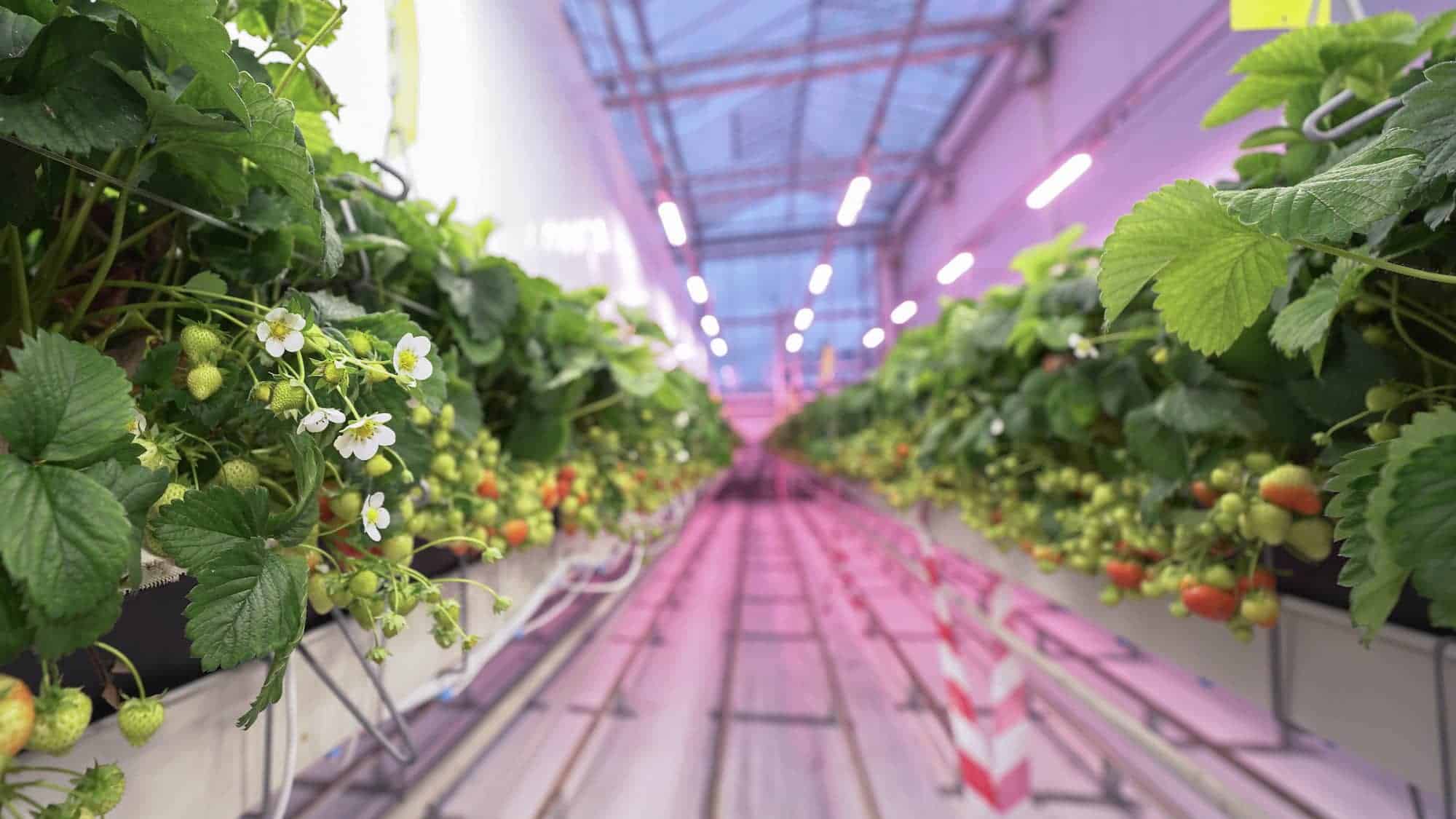
Home
Discover Fluence's cutting-edge LED grow lights and professional lighting solutions for controlled environment commercial crop production.
 www.usa.lighting.philips.com
www.usa.lighting.philips.com
That made me laugh but its genius at work, very enjoyable read
Special plants come around once in awhile, alot of grass too,,,
Nice schedule what strain was the 7week ?

